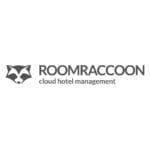 PART ONE: Do your hotel financial statements give you the information you need to effectively run your business? Are you able to see if your profits are where they should be in an enhanced top line statement? Do your statements measure flow thru? Do you record your rooms business by proper segments and track the rooms occupied, rate and revenue in each segment? Do you record customers served in F&B and do you separate meal periods? Do you record liquor, beer, wine and mineral sales on your financials separately? Do you measure labor productivity in your financials? Do you record hours of work in your financials? Do you have payroll segmented by management and hourly classifications? Do you have a separate supplemental payroll and benefits statement? Do you track arrivals and departures?
PART ONE: Do your hotel financial statements give you the information you need to effectively run your business? Are you able to see if your profits are where they should be in an enhanced top line statement? Do your statements measure flow thru? Do you record your rooms business by proper segments and track the rooms occupied, rate and revenue in each segment? Do you record customers served in F&B and do you separate meal periods? Do you record liquor, beer, wine and mineral sales on your financials separately? Do you measure labor productivity in your financials? Do you record hours of work in your financials? Do you have payroll segmented by management and hourly classifications? Do you have a separate supplemental payroll and benefits statement? Do you track arrivals and departures?
Most statements I see do not have most of these critical elements. They’re lacking these incredibly effective items that can easily be added. Most people use the standard format as outlined in the 11th addition of the uniformed system of accounts for the lodging industry. This is great however you have the ability to produce an enhanced statement with just a little more detail added that will greatly assist you in effectively managing your business. How would these elements add insight and value to your business? Let’s explore this.
Top line property operating statement showing divisional results in a summary format
This simple and incredibly effective presentation is almost always absent. Hotels will have what they think is a top line summary but it is usually not properly set up. A proper and useful top line statement will have total hotel revenue first. The statement has the current month on the left and its compared to budget/forecast and last year, descriptions down the center and actual year to date on the right followed by budget YTD and YTD last year. Then secondly the rooms section; total room revenues, total payroll, total other expense and next its total rooms expenses and finally rooms profit, five lines total. Beside every number is the percentage, so 100 per cent for the revenue, 15 per cent for the payroll and 10 per cent for the expenses, 25 per cent for the total expense and 75 per cent for rooms profit. Right off the bat you see what matters and we see the same percentages in the budget and last year columns. Next the total F&B section with; total food revenue, total beverage revenue, total other F&B revenue, and then total F&B revenue. Next its food cost, then beverage cost and if applicable other cost of sales, then total cost of sales. Next, its total F&B payroll followed by F&B expenses, total F&B departmental expenses and then total F&B profit, 11 lines. Again, and always we see percentages within the department. What percent of total F&B sales are beverage? What’s my food cost percentage this month compared to the budget and last year? It’s all here. Next it the same totals for all minor operating departments, with cost of sales, payroll and expense totals, then MOD profit. The next line is other income not including store rents. This brings us to the line, GOI, gross operating income line which equals all profits from all operating departments a critical navel gaze in your hotel.
The next part is for non-operating departments. We start with A&G; total payroll, total expenses and then total A&G, three lines. Then its sales and marketing and then POMEC or as some like to call it, maintenance and it has an extra line for total utilities. The next line is total non-operating department costs, the sum of the three departments above. In most hotels, this is the protruding waste line and it’s critical to see it clearly. The last line before GOP is store rents and its only for pure retail rent, if you run your own shop it’s a MOD. The GOP line is critical in that it’s the manager’s number, everything above this line is within his or her control, everything below the line is an owners number. Below GOP we want to see management fees. Then its insurance, property taxes, leasing costs, debt or other financing costs and lastly depreciation & reserve for FF&E. Below this, you will want to lay out the occupancy, rate and revpar totals. Next, it’s a F&B customer (covers) summary and average spend and last it’s a payroll and efte summary. If set up properly all of this can be captured in two pages. For most executives, you should be able to get 95 per centÊof what you need to see to manage your business from this report. From this greatly enhanced report, you will know where you need to spend your time working on your operation.
Flow thru
It’s great to see revenues and profits. But how much of my additional revenue flows to the profit line, or better still when revenues are declining how much profit did we preserve? Each area as outlined above can be set up to hi-lite the flow thru to the prior period for the month and YTD as well as the flow to the budget and forecast. An incredibly valuable tool is to be able to see the rooms flow thru, F&B flow, MOD flow, and NOD flow. With these numbers laid out, you can very quickly see where your revenues are being eaten and how much profit made it thru. Without a flow thru statement in your monthly financials, you are left to look through the fog of numbers. With the proper flow thru statement and some flow thru standards, you’re quickly seeing your operations and what’s working and not. In a future article, I will lay out in detail how to calculate the divisional and total flow and how you can get this with a simple excel sheet and a little bit of your own data entry.
Rooms segmentation
Knowing who your customers are is critical to your ongoing marketing efforts and always striving to be as diversified as possible with segments is critical to weathering any upcoming economic storm. For display purposes, you want to lay things out so you can see the room revenue for the segment; the number of rooms sold, the rate and how may points of real occupancy this segment produced. We want to track the segments that are relevant to our hotel. At the very least you’re probably going to want to see; transient full, transient discount, packages, internet OTA, corporate, government, corporate meeting, convention, FIT’s. The segmentation is the DNA for your hotel and not knowing where your business comes from in detail is obviously not good. With the proper layout, we will see what the different segments bring you and with a little work we can line up the distribution costs, payment costs and additional spend from each broad segment giving us great insight on each individual segments profitability.
Knowing the segment with the highest room rate is one thing, however knowing the different costs and spend is also critical. The group rate might be lower than the transient but stop and look at the distribution costs on each side. The transient almost always comes with some commission, they arrive sporadically, they can make a mess, some spend in F&B maybe and then they pay their account with a credit card. On the flip side the group arrives on mass, they usually send a rooming list or another non-commissionable method. They tend to move together in the hotel; meals, receptions and best of all they usual pay by check especially if I make this part of the sales process, to nail down the payment method. With a big group this can be several thousands of dollars. Understanding segmentation is critical.
Do you record F&B customer statistics by meal periods and beverage sales by type?
Recording F&B customers is essential to measuring pricing strategies and it’s the first half of getting productivity statistics working for you. Breaking your food sales down into meal periods is necessary to be able to track business volumes throughout the day in your outlets. Having proper meal periods with the sales, the number of customers and average customer for each period compared to budget and last year for this month and year to date is what you need to manage your F&B world. Couple this with beverage sales broken down by; liquor, beer, wine, and minerals.
Understanding the makeup of the meal periods and average prices is important because we need to know where we are making our revenues and what produces the highest profit. The typical periods you should be measuring in your full-service hotel are, breakfast, lunch, dinner, reception and coffee breaks. It’s amazing when you can look at these numbers broken out this way especially when we understand what it takes to put together a dinner vs, breakfast, or a coffee break vs lunch. I ask this question a lot in my seminars, where do we make the most money in selling food in your hotel. The immediate answers are usually dinner, heck look at the large volume of sales and average customer spend. But then cooler heads prevail and its almost always unanimous that breakfast is the most profitable and coffee the highest margin. Why breakfast? Look at the labor we need in front and especially behind the scenes for dinner and the mise en place, and you quickly and often conclude that breakfast, especially in banquets is king.
With beverage sales, we want to see these broken out and we want to be able to track the cost of sales on each. Where do we make the most money in the beverage trade? Not the most sales but the highest profit. In America, it’s hands down, liquor. With liquor costs, less than 10 per cent most of the time we love hosted bars and receptions. Wine on the other hand has a nice price but costs are usually 30% or higher. What are you telling the sellers in your conference and catering departments to sell?
Having a financial statement that produces valuable information is not hard to accomplish and the result is incredible. You have all the information you need to do this right now, at your fingertips.
More to come on what you can create with your financial statements in part two. Do you measure labor productivity in your financials? Do you record hours of work in your financials? Do you have payroll segmented by management and hourly classifications? Do you have a separate supplemental payroll and benefits statement? Do you track arrivals and departures?
 By David Lund
By David Lund
David Lund is an international expert who has been branded The Hotel Financial Coach’. Just as any great hotel is true to their brand, so is David. His client commitment is about exceptional service. And his #1 focus is to help his clients gain a fast Return On Investment from his workshops and personalized coaching. David’s background includes over 30 years as a regional controller, corporate financial director, hotel manager and controller throughout North America.

















